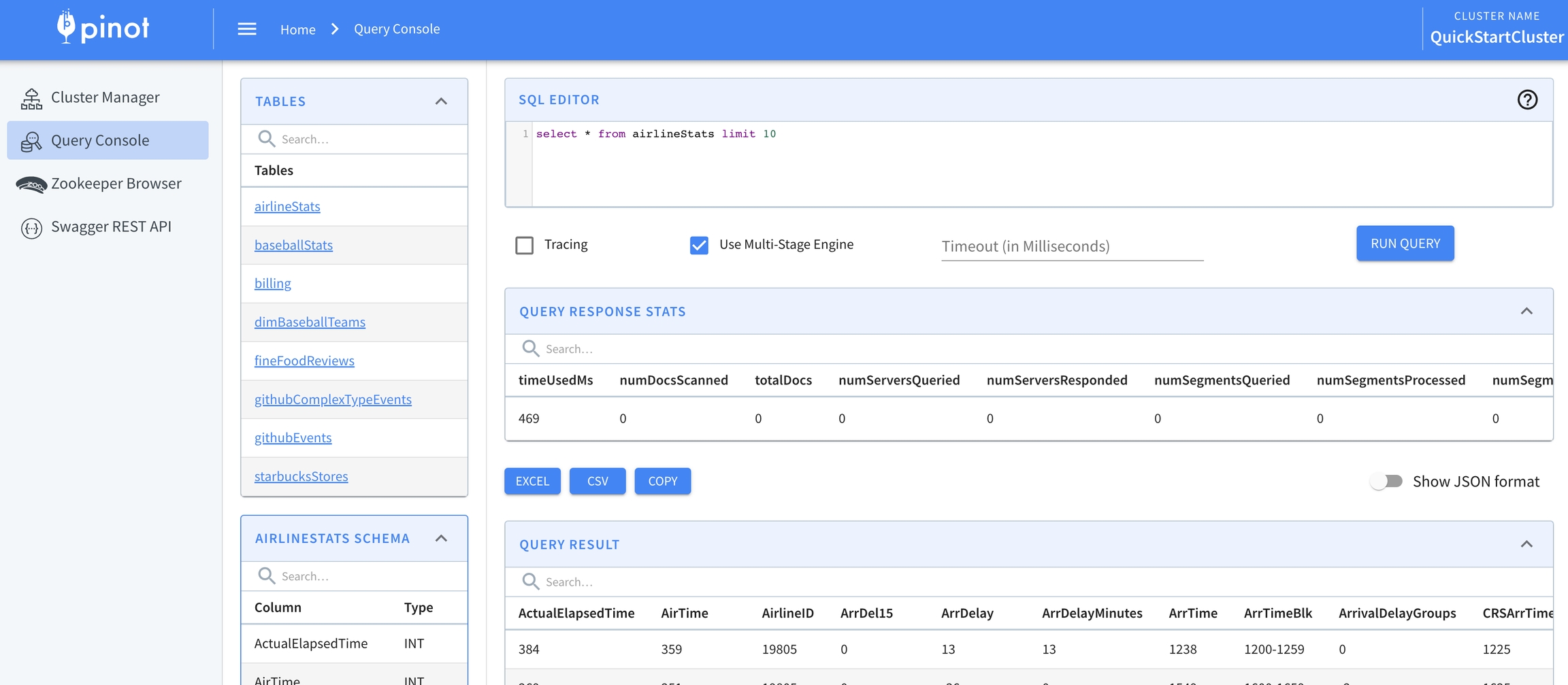Query
Learn how to query Apache Pinot using SQL or explore data using the web-based Pinot query console.

Explore query syntax:
Querying JSON dataAggregation FunctionsCardinality EstimationExplain PlanFiltering with IdSetGapFill Function For Time-Series DatasetGrouping AlgorithmJOINsLookup UDF JoinTransformation FunctionsUser-Defined Functions (UDFs)Window FunctionsWas this helpful?

